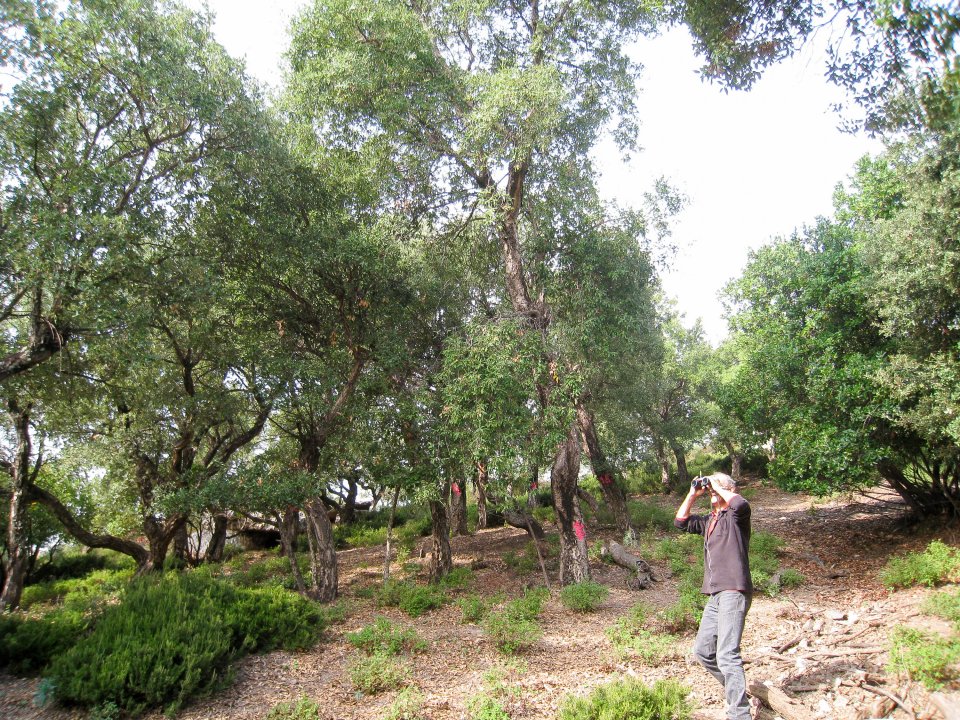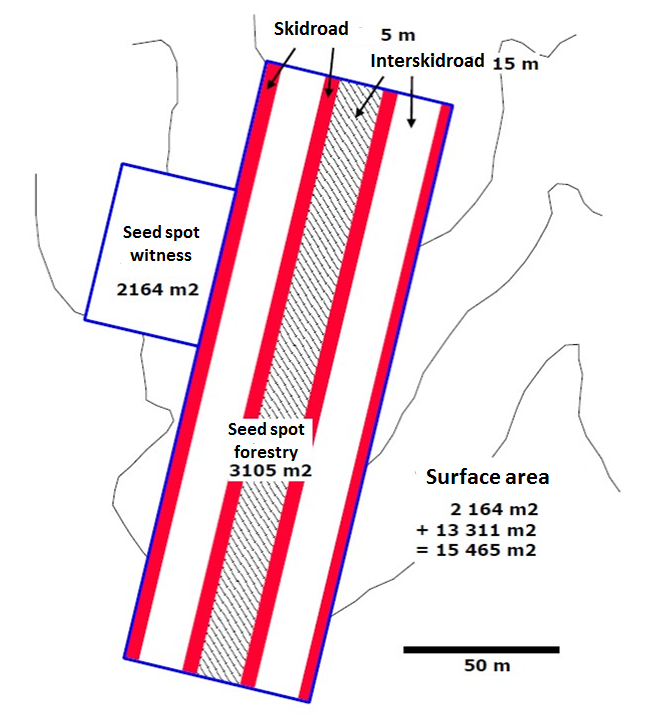
For more than 20 years, plantation and natural regeneration trials have been set up by the CRPF PACA in the Maures massif with the collaboration of volunteer forest owners. The age of some of the trials now makes it possible to obtain transferable results, to guide the management of areas favourable to the cork oak, to allow continuity of monitoring and to develop the setting up of new trials in a context of climate change to be considered.
The cork oak is of significant economic interest (cork, insulation,...) and is a habitat of community interest (9330 - Quercus suber forest) of significant environmental and heritage wealth. There is a disturbing lack of young trees (less than 40 years old) in the cork oak groves of the Var region. The CRPF has therefore developed in situ experiments on plantations and natural regeneration by integrating the climate change variable.
For planting trials, there is a better recovery of young plants (one year old) packed in large volume (800 cc) buckets.
Mycorrhization by pisolite shows good results in the nursery and seems to be confirmed in the field.
Fertilization (BRF, Calcium Potassium) has good results on height growth, and the buried collar modality with very large pots also shows good results.
The use of isoplant slabs for mulching and shading is not beneficial to plant growth.
The tubex™ and the climatic™ 120 cm sheaths offer good results and limit the plagiotropic tendency of the plants.
For natural regeneration trials, after work or fire, there is a deficit of seedlings unlike suckers and stump sprouts which are abundant.
The plants remain plagiotropic for the first 6 years. This is a sensitive period where maintenance is necessary to limit competition and eliminate the scrubland.
When planting acorns, the use of germinated acorns should be favoured.
Before intervening on a natural regeneration to select the subjects of the future, it is necessary to wait between five and six years to let the apical dominance settle.
It is important, in view of the current climatic changes, to anticipate the difficulties in adapting species to these new conditions by selecting southern provenances from the south of the cork oak's range.
A network of six trials (planting and natural regeneration) exists on the Maures massif.
The monitoring of the tests was done on a regular basis allowing the collection of numerous data.
Many modalities have been tested.
The protocol was defined in cooperation with the research stakeholders.
The test network must be multiplied to improve the interpretation of the observed variables.
The few acorn planting trials have failed despite local protection with rodent netting.
Difficulty in long-term monitoring due to resources shortages.
It will be necessary to regularly monitor and measure existing sites to confirm or refute the initial results, and to install new tests according to the first lessons learned:
o Trial of deeper buried plants;
o In-depth test of BRF (Fragmented Ramial Wood) spreading;
o Test of southern genetic origins (climate change);
o Understanding of seedling dysfunction.
Pauline MARTY, pauline.marty@crpf.fr, https://paca.cnpf.fr/
Stéphane Nalin - CRPF PACA © CNPF

Example of a cork oak plot device. Louis Amandier - CRPF PACA © CNPF
